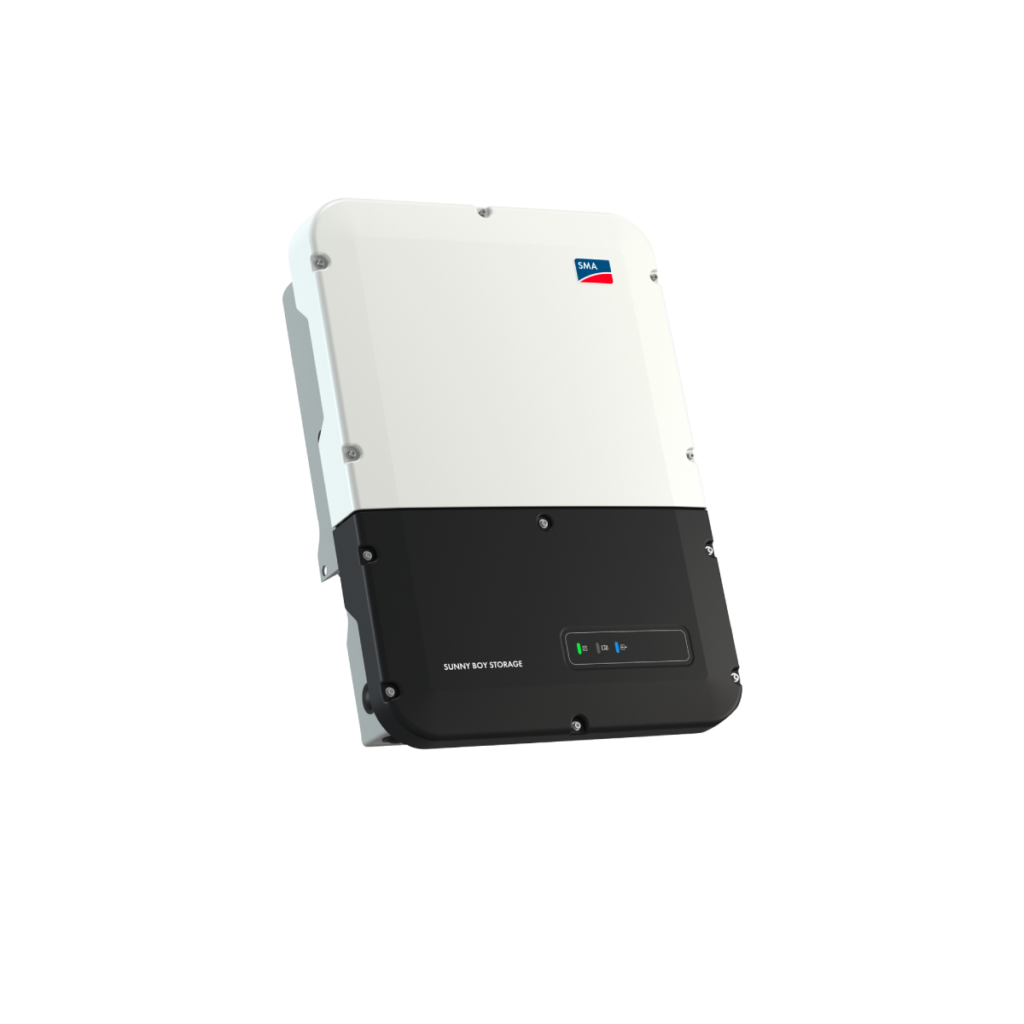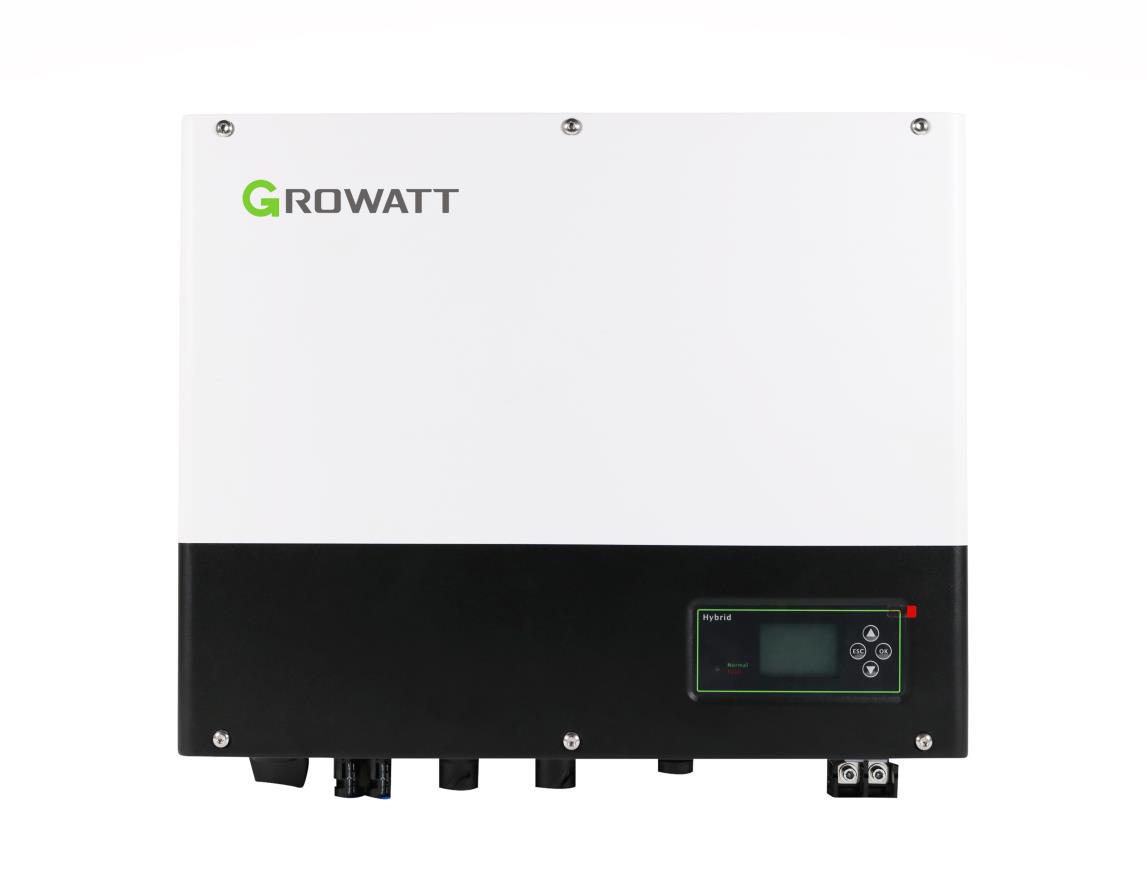Every solar panel installation requires at least one inverter. The primary function of an inverter is simple: to convert the direct current produced by solar panels into alternating current compatible with household appliances. The inverter is the essential heart of a solar panel installation, but its lifespan is considerably shorter than that of the panels themselves. While solar panels can easily last 25 years with minimal loss of efficiency, most inverters must be replaced after 8 to 12 years. This is due to intensive electronic operation and the tendency of inverters to get hot, which promotes wear and tear. Microinverters, on the other hand, have a lifespan of 25 years. Inverter installation is done during the complete installation of the solar panels. Usually the inverter is mounted vertically against a wall, with the connections located at the bottom. The output of the inverter may vary depending on its efficiency.
Choosing an inverter
When choosing an inverter, the capacity of the solar panel system is the most important consideration. For optimum performance, the inverter should have a power output between 70% and 110% of that of the system. An inverter that can handle 80% to 90% of the total power of the solar panels is often chosen to compensate for possible yield losses due to weather conditions. Besides power, other factors play a role in choosing an inverter, such as noise level, efficiency, type (central or micro), hybrid capabilities, warranty and price.
Popular brands include Huawei, SMA, SolarEdge and Goodwe.
Huawei has been a common brand among solar panel installers in recent years because of its good value for money and the fact that its (residential) inverters are all hybrid (SUN2000 KTL-L1 and KTL-M1 versions). Huawei also offers its own battery, optimizers and charging stations, allowing for a complete all-in-one system from the same brand.
SMA was the biggest brand until a few years ago, but is now being placed less because of higher costs, especially for the hybrid version, the SMA Sunny Tripower Smart Energy. One advantage of the hybrid SMA Sunny Tripower Smart Energy 3-phase inverter is that it is compatible with multiple battery brands, including LG, BYD, Axitec and, most recently, SMA’s own battery, the SMA Home Storage.
Goodwe is a solid inverter brand considering its value for money. The brand has a wide range of string and hybrid inverters, including the XS series for small installations from 2 panels up to 8. Like SMA, the hybrid EH (1-phase) and ET (3-phase) inverters are compatible with multiple battery brands, including BYD, Pylontech and Goodwe itself.
Besides power, other factors play a role in choosing an inverter:
- Noise: Some inverters produce more noise than others, which can be important depending on the location of the installation.
- Yield/efficiency: The efficiency of an inverter determines how much of the energy generated is actually converted into usable electricity. Higher efficiency usually means lower energy losses.
- Inverter type: There are two main types of inverters: central inverters and microinverters. Central inverters are often used in larger installations, while microinverters are individually attached to each panel.
- Hybrid capabilities: Some inverters are hybrid and can be paired with battery systems for energy storage.
- Warranty and purchase price: The warranty period and initial cost of the inverter are important considerations when making a choice.
- Monitoring options: Many inverters offer monitoring options via the Internet, bluetooth or specific apps that allow users to track and optimize their system’s performance.
- Smart control: Some advanced inverters can communicate with other home automation systems or devices, such as heat pumps or charging stations, to maximize self-consumption and optimize energy consumption.
Here is an overview of the top 10 most commonly used inverters in the Netherlands:
1. SolarEdge (Israel): SolarEdge is a popular choice because of its innovative power optimizers and reliable inverters. It provides advanced monitoring and optimization of solar energy systems.
2. Enphase (United States): Enphase microinverters are often used because of their superior panel-level performance and reliability. They offer panel-level monitoring and are considered a premium choice.
3. Huawei (China): Huawei’s inverters are becoming increasingly popular because of their excellent value for money and advanced technologies. They offer hybrid solutions and are compatible with a wide range of batteries.
4. SMA (Germany): A renowned brand in the solar industry, SMA is known for its reliable inverters and advanced monitoring capabilities. Although slightly more expensive, SMA inverters offer excellent performance and durability.
5. Goodwe (China): Goodwe inverters are popular for their good value for money and reliable performance. They offer a wide range of inverters for different applications, from residential to commercial.
6. Solis (China): Solis inverters are valued for their efficiency and reliability at an affordable price. They offer a wide range of inverters for different installation sizes.
7. Growatt (China): Growatt is an emerging brand that is rapidly gaining ground in the solar industry. It is known for its affordable inverters with good performance and reliability.
8. Fronius (Austria): Fronius inverters are valued for their high quality and reliability. However, they are generally more expensive and are often chosen for premium installations.
9. Delta (Taiwan): Delta inverters offer good value for money and reliable performance. They are popular because of their robust design and advanced technologies.
10. Kostal (Germany): Kostal inverters are valued for their German engineering and reliability. They offer advanced monitoring functions and are often chosen for high-performance installations.
These top 10 inverter brands are widely used in the Netherlands because of their reliability, performance and availability of advanced features.
Inverter prices
In terms of prices, the price of an inverter depends mainly on the power of the solar panel system and whether it is single-phase or three-phase. Microinverters typically cost around €160 per panel, while the price of conventional inverters can range from €600 to €2200, depending on the brand and specifications.

As for warranty, most inverter brands offer a standard 10-year warranty. Microinverters and power optimizers usually have a 25-year product warranty. It is often possible to extend the warranty to 15, 20 or even 25 years for an additional cost.

